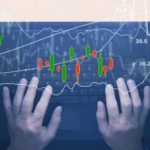How is an NFT useful for someone who buys it?
NFTs (or Non-Fungible Tokens) have recently been receiving a lot of attention in the blockchain and cryptocurrency communities. What are they? How are they useful? How can you get them? In this article, we’ll dive into the world of NFTs, explore what makes them special, and provide some insight into why they’re so valuable to their owners.
So First you have to know about the History of NFT
The history of Non-Fungible Tokens
Non-fungible tokens (NFTs) are gaining in popularity and seem to be popping up everywhere. That’s because they provide a unique way to utilize blockchain technology that can open up new opportunities and applications within several industries, especially gaming. Although still new and evolving, using these tokens provides a number of benefits compared to similar use cases (or applications) involving ERC-20 tokens or other blockchain technologies. We’ll explain what exactly an NFT is in more detail below and how they can have different uses within both a game environment and outside of it. But first, we’ll briefly discuss some background on fungible versus non-fungible items so you can better understand how they work before diving into each of their uses individually.
Real World Applications
In Decentraland, where anyone can create and own LAND, you might imagine that buying a piece of virtual property would be just like purchasing a real-world home. However, there are distinct differences between LAND in Decentraland and a physical home or property. Ownership in Decentraland isn’t quite as straightforward as buying a house with a title deed—NFTs will enable individuals to do things like sharing their creations with others, rent out their land, or sell their land altogether. One of our biggest goals is to empower users to customize their experience on Decentraland however they see fit.
Advantages Over Other Blockchain Solutions
Non-fungible tokens (NFTs) provide advantages that other blockchain-based solutions don’t. For example, a smart contract can dictate what happens to an individual NFT once it has been traded, creating unique possibilities for how you can use your new asset. Additionally, there are no transaction fees involved in trading one piece of digital property—and many companies have already started implementing their own versions of NFTs onto Ethereum and NEO’s blockchains. In fact, companies like Ontology, which features interoperability between multiple blockchains and its own universal smart contract system known as OneChain, have launched their own non-fungible token systems. What better way to make your assets more personal than to ensure they are one of a kind?
Understanding The Benefits
Non-fungible tokens, or NFTs, may be a new concept to you if you’re unfamiliar with blockchain technology. The goal of non-fungible tokens is to take any digital asset and make it unique and non-duplicable by linking its authenticity directly to a real world object. Non-fungible tokens can be anything from real estate to artwork to collectibles like Beanie Babies, but they all have one thing in common: they are assets that represent ownership over an underlying physical thing. For example, I could buy a digital token that represents my car. This token would entitle me to trade or sell my car digitally.
What do I buy with NFT’s?
Many people have invested in non-fungible tokens (NFT’s) and may not know what to do with them. They were purchased as a trading commodity and are hoping to see gains from an increase in value. There are many ways that you can use NFT’s to make money. Most of these things will involve investing in other new projects that utilize similar technology but some can be very passive as long as you buy good items at a low price and hold onto them for years before selling. The first way to use NFT’s is by directly using them as a currency in games or platforms built on top of Ethereum such as CryptoKitties or Etherbots but there are many others, including those based on real world scenarios.
When should I sell my collectibles
Not all collectibles increase in value, and you should be willing to part with them at a moment’s notice. For example, if your house was about to burn down and you could grab one item from your collection, which would it be? It’s best to have items that can hold their own on their own merits; otherwise, they might not be as valuable as you think. In addition, if you have no plans to keep your collection as a whole intact forever (because of lack of space or money), start selling some pieces off before more become worthless.
Why can’t I buy something with an ERC721 token today?
If you’re new to cryptocurrency, then chances are you’ve heard of Bitcoin, Litecoin and Ethereum. Maybe you have heard of some other cryptos like Ripple or Monero. Then again, maybe you haven’t heard of any cryptocurrencies at all! The point is that most people today have no idea what they are and how they work. So if you’re someone who has no idea what a cryptocurrency even is (you don’t feel bad; many people aren’t sure how cryptocurrencies work either), then check out Why can’t I buy something with an ERC721 token today? on CryptoZap.
Future Uses of Cryptokitties and Beyond
The kitties have been a huge success and Cryptokitties has quickly become one of Ethereum’s most successful projects. The team has already announced several new features and game modes for future iterations of Cryptokitties. Future plans include PUREBREEDS, DUPLICATES, and PRO GENERATION tokens as well as more complex breeding contracts to add interesting variables to gameplay. Their roadmap includes plans to improve their user experience by adding support for MetaMask (web-based wallet) and Ledger Nano S (hardware wallet). Also planned are in-app purchases like accessories, backgrounds, and other aesthetic items to dress up your kittens.








